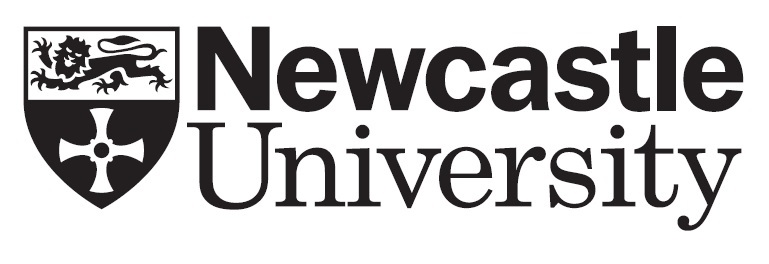Jewish Visual Culture in Modern Europe (c.1840–1940)
Tom Stammers, University of Durham
The question of whether it is possible or desirable to define ‘Jewish’ art or ‘Jewish’ taste remains contentious. According to Dominique Jarrassé, to even ask the question invites suspicion of essentialism, generalisations or even anti-Semitism. Yet the contribution of Jewish artists, architects, critics, dealers and collectors to the formation of modern European culture is as unavoidable as it is elusive. This session draws on the conference themes to examine different methodological approaches to the ‘Jewishness’ of visual culture in the era of emancipation, secularisation and assimilation. How far can we identify recognisably Jewish forms of making art – whether in the relationship between text and image, the production of sacred space, or the encoding of cultural difference? In what ways have Jewish scholars intellectually reframed the narratives of art history? And what, if anything, is salient about the ways that Jewish patrons commissioned or ‘consumed’ art in both the private and public domain?
Timed to coincide with the beginning of a major AHRC-funded project on Jewish Country Houses, the session invites applications from scholars working on Jewish artists or Jewish collections in Britain and Europe in the period 1840–1940, broadly conceived as collections with Jewish stories to tell. How has the Jewishness of artists and art practices been understood? How can the practice of collecting shed light on the history of Jewish identities/identifications, as well as on how these identities/identifications should be theorised by scholars today? How can thinking about Jewishness expand our notions of and approaches to visual culture? The Jewish case is at once exceptional and highly suggestive about the interpretive challenges of locating religious and ethnic minorities within art history.
The Jewish Look: Unpicking the contribution of Jewish fashion designers to London’s interwar ascendance as a creative fashion city
Bethan Bide (University of Leeds)
‘Entangled in the shackles of our fight for existence:’ A Jewish Marionette Theatre in Pre-War Nazi Germany
Dana Smith (Keene State College)
Samuel Hirszenberg’s Entangled Worlds: A Polish-Jewish Artist in fin-de-siècle Łodź
Mirjam Rajner (Bar-Ilan University)
From Jewish Aesthetics to the Aesthetics of Jewishness: Jews, the Avant-Garde, and Race in the Interwar Period
Zoe Roth (University of Durham)
An Invisible Avant-Garde: Jewish Collectors and Patrons in Bucharest, 1915-30
Alexandra Chiriac (St Andrews University)
‘Russian/Exotic/Jewish’: Dora Gordine (1895?-1991), sculpture and identity in the UK 1928-1940
Jonathan Black (University of Kingston)
Click here to download this session's abstracts or view below
The Jewish Look: Unpicking the contribution of Jewish fashion designers to London’s interwar ascendance as a creative fashion city
Bethan Bide (University of Leeds)
Fashion runs as a continuous thread through the histories told about Jewish London. Indeed, the close relationship between major Western fashion cities and their Jewish diasporas is so widely acknowledged in popular culture and histories that familiar clichés – such as the impoverished and exploited sweatshop worker, to toiling but talented tailor and/or ruthless businessman or banker – take on oversized importance in simplifying and reinforcing stereotypes about 20th century urban Jews. Yet the growing popularity of these fashion histories masks an absence of historical research that looks beyond these culturally problematic tropes to understand the complexities of the relationship between creative fashion cities and their Jewish populations.
Recognising that Jewish populations played a pivotal role in London’s ascent as a global fashion capital in the interwar period of the 20th century, this paper explores the connections between the city’s fashionable reputation and the urban Jewish communities around which its fashion industry centred from 1919–39. Crucially, it looks beyond well-known industry figureheads, such as Montague Burton, to instead study the significance of the creative labour of the designers involved in producing mid-market ready-to-wear and wholesale couture fashions. Uncovering these narratives is not always a straightforward prospect, not least because the anti-Semitism endemic in British society forced many Jewish designers to conceal their Jewish identity. As a result, this paper concludes by exploring how the forgotten stories of Jewish fashion designers are being reconnected with the objects they produced through a re-cataloguing project in conjunction with the Museum of London.
‘Entangled in the Shackles of our Fight for Existence’: A Jewish marionette theatre in pre-war Nazi Germany
Dana Smith (Keene State College)
In the spring of 1933, mere months after Adolf Hitler rose to power in National Socialist Germany, a group of locally based Jewish artists in Munich began meeting at a small, well-lit studio in the city’s university district. The group, led by active Zionists Maria Luiko and Fritz Rosenthal (later, Rosenthal will change his name to Schalom Ben-Chorin – arguably Israel’s most well-known German-Jewish poet), devised ‘something new’ for Munich: a Jewish marionette theatre. They created a marionette theatre as a ‘specifically Jewish endeavour’, maintaining that ‘all works either have to be written by a Jewish author or have to contain an easily identifiable Jewish theme, and all acting and technical work is to be exclusively in Jewish hands’ (Bayerische Israelitische Gemeindezeitung, 1934, p. 31). They fashioned the marionettes after the experimental style of the Jewish Habima theatre, and then created a programme that included a rendition of the Moses saga, Eastern European Yiddish dramas and local Bavarian folk stories.
This paper uses the example of Luiko’s Jewish marionette theatre to examine the connection between art, gender and agency as German Jews were forced to navigate what being ‘Jewish’ now meant to them in Nazi Germany. For Luiko – who was Jewish, as well as a woman, an artist, a Zionist, a German and a Bavarian – the marionette stage acted out a complex sense of identity. She used a decidedly Bavarian Catholic medium (one which was co-opted as a ‘pure German’ art form by the Nazis) to perform self-described ‘Jewish’ art before an entirely Jewish (and sold out) audience.
Samuel Hirszenberg’s Entangled Worlds: A Polish-Jewish artist in fin-de-siècle Łodź
Mirjam Rajner (Bar-Ilan University)
In 1904, the German-Jewish journal Ost und West published a reproduction of Samuel Hirszenberg’s (1865–1908) Exile (Golus). Now lost, this iconic painting comments powerfully on the modern Jewish plight. Although initially conceived as early as 1899, its publication a year after the infamous Kishinev pogrom led to Hirszenberg’s painting being adopted by the Zionist movement as the image of Diaspora misery, one that visually strengthened the movement’s ideology. Hirszenberg and other Polish artists of Jewish origin who painted the seclusion, poverty and spirituality of traditional Jews – of the Ostjuden – became known as ‘painters of the Ghetto’.
However, Jewish subjects were only one part of their artistic oeuvre. From the very beginning of his artistic career, Hirszenberg was supported by wealthy Jewish industrialists in his hometown of Łodź who, while building an empire of the textile industry, also sought to elevate their city’s – and their own – cultural life, and to thus secure a place among the respectable bourgeoisie, often imitating aristocracy. These local magnates generously supported building projects, theatre, music and art. In my paper, I will explore some lesser known aspects of Hirszenberg’s art, created especially for his patrons’ country villas (the Silberstein house at Lisowice) and city mansions (the Poznański palace), which includes impressionistic landscapes, portraits and Symbolist wall decorations. The discussion of these works will, I hope, clearly address the complexity of ‘Jewish’ artistic creativity.
From Jewish Aesthetics to the Aesthetics of Jewishness: Jews, the avant-garde and race in the interwar period
Zoe Roth (University of Durham)
Jewish artists have often been disproportionately represented in interwar avant-garde artistic movements, from the so-called École de Paris to radical Dada groups. At the same time, however, such movements were often qualified as essentially ‘Jewish’ by right-wing and racist discourses that argued that the ‘degenerate’ aesthetics of avant-garde movements derived from their ‘Jewish’ roots. How do we thus account for the historical involvement of Jewish members in such artistic movements without reducing their work to a racialised identity? Rather than focusing on the aesthetic representation of Jews, this paper explores the modes of aesthetic perception that have led to the recognition of Jewishness as a visual phenomenon – whether written on the Jewish body or embodied in a particular artistic movement.
The paper situates the argument in relation to Hammerschlag’s notion of the ‘figural Jew’ in theological studies, Freedman’s concept of Jewishness as a ‘semiotic problem’ in Jewish literature, and Silverman’s work on Jewishness as an ‘analytical category’ in Jewish history. While fruitful for revealing the discursive nature of ‘Jewishness’, however, these concepts overlook the role the aesthetic plays in the construction of Jewish difference. This paper thus approaches Jewishness as a mode of aesthetic perception. It develops this method through an exploration of a corpus of works by Jewish avant-garde artists between the two World Wars, when racial discourses increasing signalled out Jews as visually distinct, and avant-garde aesthetics as distinctly Jewish. In doing so, it argues that ‘Jewishness’ is not a pre-existing racial or ethnic category but one that emerges through dominant modes of aesthetic perception, while also leaving open the possibility of the aesthetic to disrupt established racial codes.
An Invisible Avant-Garde: Jewish collectors and patrons in Bucharest, 1915–1930
Alexandra Chiriac (St Andrews University)
The defining image of Jewish collecting in Bucharest is probably a leather book-binding inspired by cubist collage, paired with a menorah-shaped metal bookmark. It was created in 1926 for Abraham Leib Zissu, a patron of Romanian avant-garde publications and a life-long Zionist activist. The place of its creation was the Academy of Decorative Arts, the first Bucharest school of modern applied arts, founded by Heinrich Fischer-Galați, an assimilated Jew and supporter of the supranational language of Esperanto. Shifting between segregation and integration, between cosmopolitanism and nation-building, the identity spectrum of Jewish collectors in Bucharest was both fluid and diverse, defying categorisation. What unites these figures, however, is the lack of comprehensive scholarship attesting to their activity as patrons of the arts in Romania.
This paper is consequently part of an ongoing investigation concerning the impact of modernism on the visual and material culture of Bucharest in the 1920s and 1930s. The country’s avant-garde artists, amongst them Tristan Tzara or Marcel Janco, have frequently had their Jewishness equated with cosmopolitanism and an openness towards modernity. Yet such an approach slips perilously towards essentialism and does not account for the diverse collecting practices and attitudes to cultural difference exhibited by the patrons of this same avant-garde. This paper thus aims to highlight the wide-ranging activities of Jewish collectors such as Fischer-Galați and Zissu, whilst at the same time investigating their continued absence from histories of modern art in Romania.
‘Russian/Exotic/Jewish’: Dora Gordine (1895?–1991), sculpture and identity in the UK 1928–1940
Jonathan Black (University of Kingston)
This paper is derived from research undertaken over a number of years regarding the intriguing figure of Russo-Latvian-Jewish sculptor Dora Gordine (born Gordin). Born in Latvia when still part of the Russian Empire into a prosperous middle-class Jewish family, she moved to Paris to study under Maillol in the mid-1920s. In the French capital, it was noticeable that she specifically cultivated British collectors, patrons and sitters for her portrait sculpture. From the outset, her British ‘fan base’, with many numerous links to the Bloomsbury Group, appreciated her perceived ‘exoticness’ as simultaneously supposedly ‘Russian’ combined with her Eastern European Jewish heritage.
Gordine had her first UK solo exhibition at the Leicester Galleries in October 1928. It was a financial and critical success – with the critics singling out the allure of her ‘exotic’ bronze sculpture. This paper will argue that in large part the perceived exotic allure of Gordine’s sculpture can be traced to her Russo-Jewish heritage maintaining a delicate balance in the minds of her cultivated British spectators. She and her work were regarded as part of an established neo-classical tendency energised by her Jewish Eastern European cosmopolitanism.
By the mid-1930s, Gordine’s identity within the UK had been further complicated by marriage to her third husband – Anglo-Irish aristocrat Richard Hare, heir to the earldom of Listowel – and the related construction with the support of that husband of an Art Deco studio-house for Gordine on Kingston Vale in south-west London. Gordine’s position within the British art world was secured by another solo exhibition of her sculpture at the Leicester Galleries. This opened early in November 1938 to rapturous reviews and yet awareness of a Jewishness perceived as still problematic was awakened within a matter of days by news of the Kristallnacht pogrom in Germany.
|
|
|
|
|
|
Supported by
Conference Sponsors
![]()
Sponsored by
ASSOCIATION FOR ART HISTORY
![]()
Terms & Conditions
![]()


